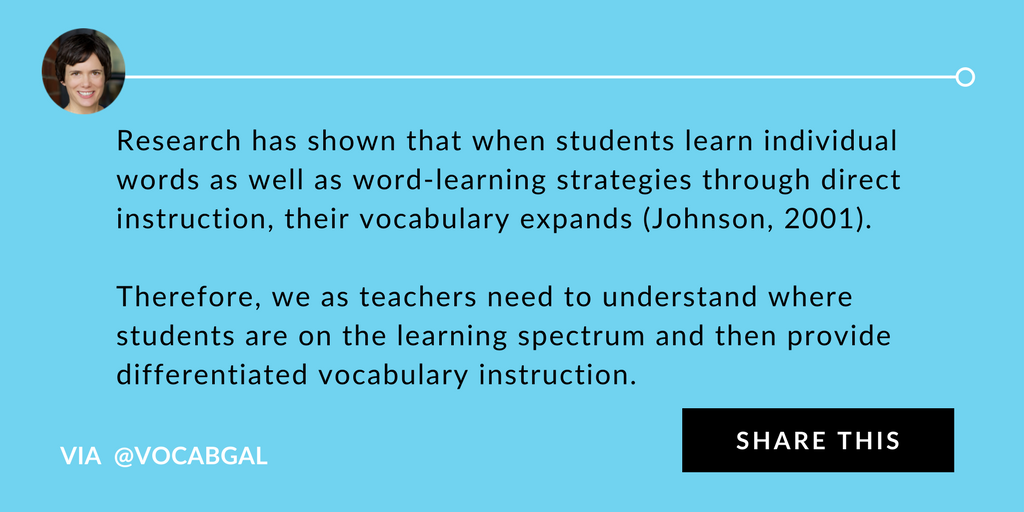April 10, 2018 VG Teaching Strategies Test-taking, Vocab Gal, ELA Resources - Graphic Organizers, ELA Resources - Assessment, ELA Resources - Activities, ELA PD - Assessment, ELA 9-12, ELA PD - Leadership, ELA PD - Vocabulary, ELA Resources - Charts/Posters, ELA Focus - Writing with Vocabulary, ELA Focus - Vocabulary
ACT/SAT Test-Taking Strategies: Pre-assess & Differentiate Vocabulary Learning
By: Vocab Gal
After 13+ years teaching high school English, I've concluded that ACT and SAT test-taking strategies are more successful when educators make pre-assessments and differentiated learning a priority! Pre-assessment and customized learning are critical for students to be successful. Learn how to pre-assess students’ word knowledge and implement differentiated instruction to help students expand their vocabulary and cultivate skills that contribute to success on the SAT® and ACT® exams.
Download Vocab Gal's Favorite SAT & ACT Test Prep Resources Kit now!
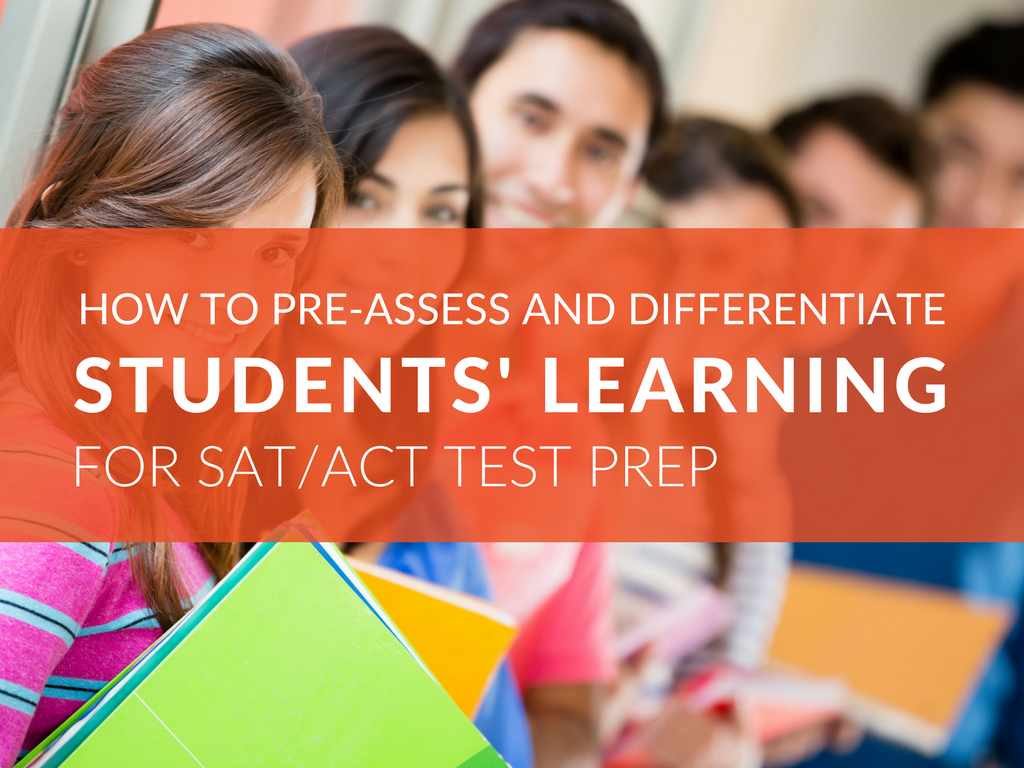
Why ACT & SAT Test Prep Should Start With Vocabulary Instruction
Research has shown that when students learn individual words as well as word-learning strategies through direct instruction, their vocabulary expands (Johnson, 2001). Therefore, we as teachers need to understand where students are on the learning spectrum and then provide differentiated vocabulary instruction.
Research also shows that even with the newly revised SAT and ACT exams, when students directly learn many Tier 2 words, that is, words that are used in higher-level texts and that are applicable to many situations, not just discipline-specific Tier 3 words, or basic Tier 1 words, they will do significantly better on the SAT/ACT exams.
This is because both exams require students to read several sophisticated passages containing many Tier-2 words. These passages cannot be fully understood or analyzed if students cannot recognize the words being used. Additionally, several questions on the reading sections of each test ask students to use context clues to help them determine the meaning of Tier-2 words. Finally, the more sophisticated vocabulary that students use on essays, the stronger their voice and the higher their final score.
The best way we can prepare students for success on ACT/SAT exams is to assess how many Tier-2 vocabulary words they know already, as well as which word-learning and context clue strategies they know, and then to modify their learning accordingly.
Although it may feel daunting, a few simple techniques can make both the pre-assessment and differentiated strategies manageable and effective.
ACT & SAT Test-Taking Strategies: Pre-Assessment
IMPORTANCE OF PRE-ASSESSING STUDENTS' VOCABULARY KNOWLEDGE
Unless teachers have an accurate understanding of their students’ competence with both vocabulary word knowledge and context clues strategies, they will not be able to comprehend what lessons students need for improvement.
I particularly don’t want to waste the time of my more advanced students when they could be working to augment their knowledge through more complex assignments. At the same time, I don’t want to leave behind the struggling students or discourage average students with assignments that are too advanced for their level.
HOW TO PRE-ASSESS STUDENTS' VOCABULARY KNOWLEDGE FOR TEST PREP
The best way to pre-assess students’ vocabulary knowledge is to use your vocabulary program’s diagnostic test. In order to test my students’ vocabulary knowledge, I have them take the diagnostic test, in which they need to select the proper meaning of each vocabulary word from four multiple-choice options.
I especially like the Sadlier’s Vocabulary Workshop® Enriched Edition and Vocabulary Workshop® Achieve diagnostic tests because they include a strong sample of important Tier 2 vocabulary words, and they embed each word in a phrase that includes context clues. Students answer 50 multiple-choice vocabulary questions about the meaning and usage.
I always tell my students that I expect them to do poorly on this test because these are some of the words we are going to learn during the year. If, however, they do well because they already know the words’ meanings, I challenge the students to strive to integrate the words fully into their written work and spoken language through the year.
By providing a framework for both lower- and higher-level students that allows them to see themselves as word learners, I eliminate early on both the discouragement of those who don’t do well on the diagnostic test and the overconfidence of those who perform at a higher level.
Next, in order to test my students’ knowledge of context clue strategies, I have them underline the one or two words in each phrase that act as context clues for the word, and I also have them label at least two different types of context clue strategies that are employed by the phrases on the test.
When they are done, I have them score themselves on the vocabulary knowledge step, and then I go back and check how well they performed with context clue understanding.
Don't have a diagnostic test? Download my Vocabulary Assessment Charts.
ACT & SAT Test-Taking Strategies: Customized Student Learning
Once teachers understand where each individual student is, they can customize student learning to prepare them for the SAT and ACT exams. When possible, educators should implement differentiated instruction to help students expand their vocabulary and cultivate skills that contribute to success on the SAT® and ACT® exams. Below are ACT and SAT test-taking strategies and customized learning examples for struggling, average, and above average students.
All students, from the below-average to the above-average, must complete a few tasks. I have them take an SAT/ACT formative practice test to again confirm their strengths and weaknesses regarding vocabulary and context clue knowledge. These tests help students understand one of the myriad reasons it is important to study vocabulary, and how these practice tests provide me with a great source of data to measure student growth.
STRUGGLING STUDENTS
In my classroom, students who do poorly on both vocabulary knowledge and context clue knowledge are assigned the exercises in Sadlier’s Vocabulary Workshop Achieve book. These activities are scaffolded so that students first have sentences loaded with context clues and their task is to determine which sentences use the words accurately. In the following exercises, students have to choose between two possible options for the best vocabulary word, and then the later exercises ask them to fill in the blank in the sentence with the correct vocabulary word, while only being provided with a word bank.
Before they begin those exercises, however, I spend time with the struggling and average students sharing this sheet from the beginning of the Vocabulary Workshop Achieve book that discusses each context clue type and provides examples of their usage. I then scaffold their work in the vocabulary book by walking them through exercises together and gradually letting them perform their own tasks. In this way they can both learn the vocabulary words as well as the context clue strategies for identifying word meaning.
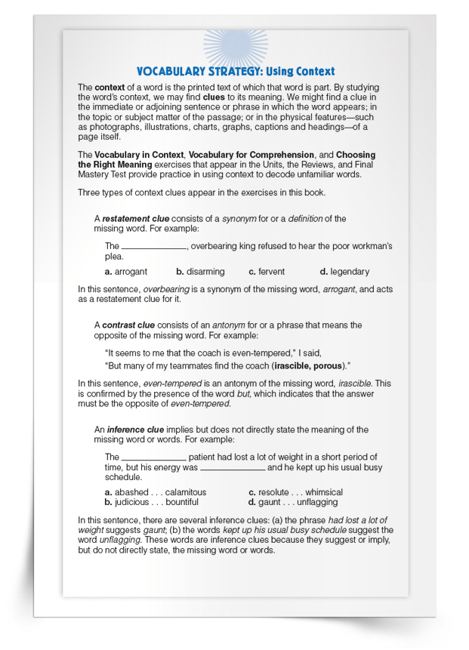
If you do not use Sadlier’s Vocabulary Workshop Enriched Edition or Vocabulary Workshop Achieve books, you can complete similar tasks with your own vocabulary sets. You can take your struggling students through the same vocabulary and context clue routines by having them work with the relevant words they don’t know and also including sentences in which they are used contextually, so that you can determine if students can notice the relationships between the words and the rest of the sentences.
Vocabulary Workshop Achieve’s final formative assessment checks for struggling students include both the successful completion of the workbook’s first three activities, and the successful underlining of context clues for all of the sentences in those exercises.
AVERAGE STUDENTS
I find that average students get the biggest benefit from being cognitively aware of the context clue strategies that they are already employing when they encounter new words, while also being able to work with and understand the meanings of previously unknown Tier 2 words.
After teaching context clue strategies and scaffolding the Vocabulary Workshop Achieve activities for students, I allow average students to skip most of the easier formative assessment activities and to complete only the more difficult activities in the vocabulary workbook including the fill-in-the-blank exercises. They do have to successfully complete these activities and also have to successfully underline the context clues that helped them arrive at their conclusions.
ABOVE-AVERAGE STUDENTS
For above-average students, I ensure that they, too, are metacognitively aware of the context clue strategies they are employing when they successfully discover the meaning of unknown words.
However, rather than scaffolding and having them complete the formative practice sentence completion activities, I have them answer the written response question in the unit using vocabulary words and underlining when they use context clues. My goal, as I noted earlier, is to ensure that above-average students do not just recognize vocabulary words, but they actually incorporate them into their written lexicons, and in order to do so, they must practice using them.
All students, from the below-average to the above-average, must complete a few tasks. I have them take an SAT/ACT formative practice test to again confirm their strengths and weaknesses regarding vocabulary and context clue knowledge. These tests help students understand one of the myriad reasons it is important to study vocabulary, and how these practice tests provide me with a great source of data to measure student growth.
DIFFERENTIATED GRADING FOR ALL STUDENTS
Each week, all students must take my alternative assessment test that requires them to use vocabulary words in sentences and to understand the context clues they use. This assesses all students at a high level of word knowledge and context clue usage skills, while at the same time allowing them to differentiate the parameters of the sentences and the strength of the context clues, as well as the number of words on the quiz.
Additionally, I differentiate their grading based on what I know of each student’s vocabulary prowess and growth. Download my Differentiated Weekly Vocabulary Assessment Handout now.
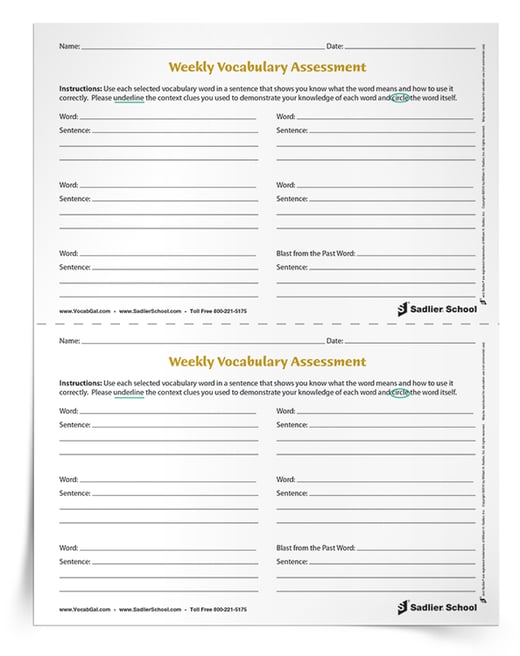
ACT & SAT Test-Taking Strategies: Summative Assessments
Finally, all students must take a summative SAT/ACT test to measure their growth of word knowledge and context clue usage. This data, along with the weekly alternative test data, allows me to see the progress each of my students is making toward understanding context clues, understanding their vocabulary, and integrating the newly-learned words into their lexicon.
Once differentiated strategies are established, teachers can use the Vocabulary Assessment Progress Chart to keep track of students' progress and adjust instruction accordingly.
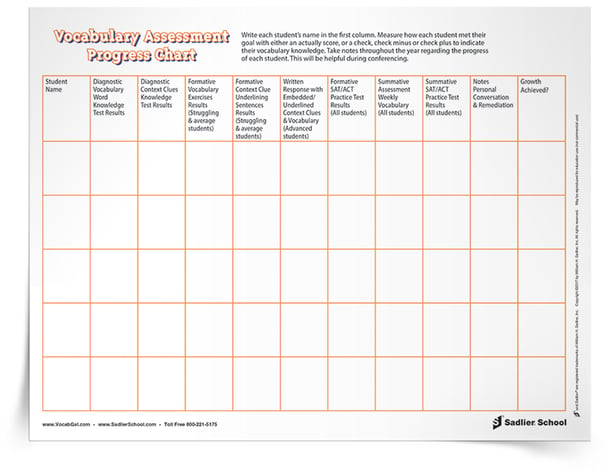
ACT & SAT Test-Taking Strategies: Vocabulary Workshop Achieve
The ACT and SAT test-taking strategies and test prep I provide my students revolve around my vocabulary program, Vocabulary Workshop.
For teachers, who always look to do what is right, while at the same time not creating a huge drain on resources, I have found that the new Vocabulary Workshop Achieve program is a tremendous resource.
It has so many helpful activities built in, including the diagnostic test, the numerous formative assessment activities created for all levels of students, and a large number of sample SAT/ACT practice tests for students to take as both formative and summative SAT/ACT assessments.
Additionally, there is a significant audio component in which the nonfiction passage is read aloud; each word is also read aloud and the definitions, synonyms, and example sentences are provided. This helps all of my students from advanced to struggling students really hear and comprehend the vocabulary words on a deeper level, in addition to helping them complete all the exercises to solidify word knowledge.
Get a sample of Vocabulary Workshop Achieve to learn more about this amazing program!
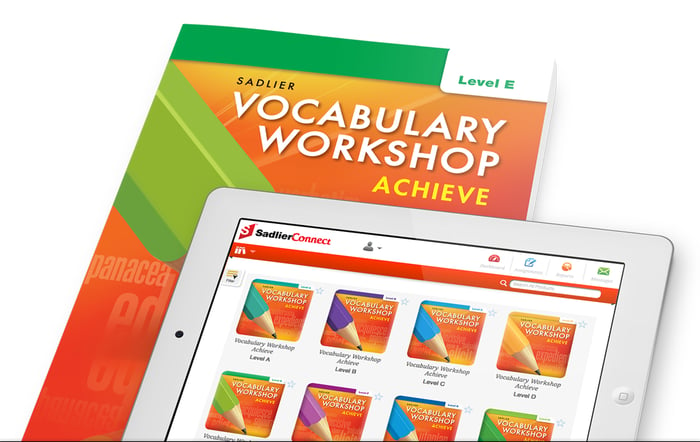
In Summary
Overall, it’s extremely important to both pre-assess and differentiate the word learning that takes place in your classroom.
My three-pronged approach to diagnostic testing for vocabulary and context clue knowledge, my formative assessment using the Sadlier practice ACT/SAT sample tests, and finally the differentiated vocabulary activities and assessments, allows each student to maximize his or her own learning.
The provided Vocabulary Assessment Progress Chart , along with the SAT/ACT practice test activities, and the Context Clues Strategy Sheet are invaluable free resources you can use to teach in these ways.
Please let me know if these resources are helpful to you and share what other ways you assess and differentiate as you strive to improve your students’ SAT/ACT scores, as well as their overall lexicons and writing abilities.
